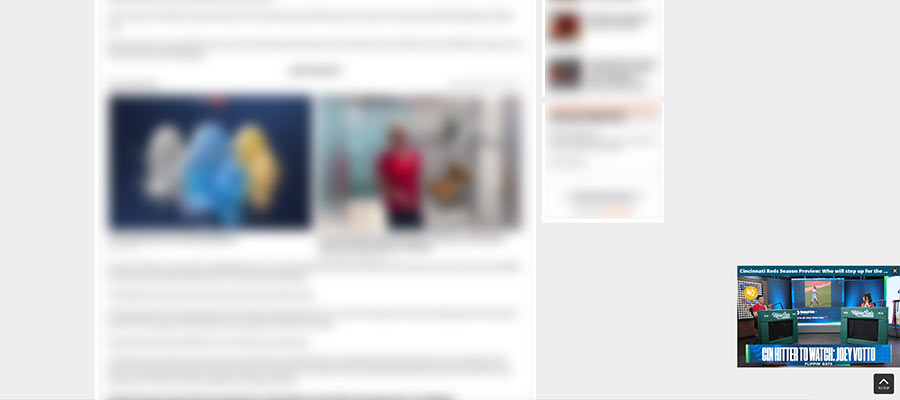To quote an iconic (and personal favorite) song from the 1990s: it’s the little things that kill. In this case, we’re talking about a website’s user experience (UX).
Sometimes these elements can be afterthoughts. Or put into place for marketing or analytical purposes. But they will drive users both crazy and away from your website.
Overdramatic? Maybe. But it’s a stark reality. Regardless of how brilliant your design and content may be, a bad UX sticks with users. And unless they have a compelling reason to come back, they probably won’t. You can’t blame them. Who needs the bother?
Let’s take a moment to outline some of these annoying practices. Sadly, they’re prevalent across the web. But that doesn’t mean we have to partake in them.
Modal Windows That Change Your Scroll Position
Modals are everywhere. It seems like everyone is vying for our attention by putting pop-up windows in our faces.
The practice has become so commonplace that it’s easy to ignore. Users can simply click and rid themselves of the interruption. No harm done.
But there is one implementation that is harder to justify. And it may not even be intentional.
Imagine visiting a page and beginning to scroll down. Everything’s going great until a modal window appears – and resets your scroll position to the top of the screen.
This puts users right back where they started. And not everyone will have the patience to restart their journey.
Whether this effect is due to buggy JavaScript or by design, it’s not ideal for UX. Regardless, it’s worth testing modal features to ensure that they’re as minimally invasive as possible.

Requiring Extra Clicks To See Full Content
For news-oriented websites, it’s standard practice to display an index of articles. A user can find an item of interest and click to access it. Content management systems (CMS) like WordPress make this easy to implement.
And that’s usually the end of the process. Users can view the chosen content and decide what comes next. Except it doesn’t work that way on every site.
Some websites have added an extra step. You’ll only get a partial view of the content – maybe a paragraph or two. At some point along the way, you’ll be asked to click a button to reveal the rest of the article.
If the content is behind a paywall and requires a login, that’s an understandable step. But otherwise, it’s preventing users from accessing the very item they wanted to see.
Whatever the benefits of this strategy, happy users are not among them. Users should not have to click twice to view content.

Third-party Features That Slow Page Load
Modern websites are capable of loading content and functionality from third-party sources. Connecting to social media APIs, for example, is a widespread practice. The same can be said for analytics, remotely-hosted fonts, and various software-as-a-service (SaSS) providers.
These features can be problematic, however. First, there are potential privacy issues. Users are becoming more aware of what they share and who they share it with. Some may be turned off by the idea of allowing Facebook, etc. to track their movements.
Page load times are also a concern. Even if your web host performs well, pages can still be slowed to a crawl by these third parties. They may prevent users from navigating your website.
Thankfully there are ways around this issue. Fonts can be stored locally. And some plugins cache social media feeds for faster loading. Locally-hosted analytical apps are also available.
Implementing features from third parties is fine. But it should be done in a way that minimizes the inconvenience to users.

Multimedia That Scrolls With the User
Video presentations are often placed at the top of a page. This makes it easy for users to find and watch. But if they scroll past the video, what does that say about their intent?
Far too often, these videos are configured to travel along with the user. As a user scrolls, the video shrinks and tucks into a corner. In some cases, it completely disregards user intent and is set to automatically play.
This is particularly frustrating for those hoping to read the associated content. Having moving images in the field of view, even if they’re off to the side, can be a distraction.
And mobile users are in worse shape. The unwanted video takes precious screen real estate away. This makes it more difficult to focus and read.

Is Your Website Frustrating Users?
When it comes to poor UX, the items above merely scratch the surface. But they’re prime examples of well-intentioned features gone wrong.
There are often legitimate reasons to put them into place. And the occasional feature may end up being more annoying than you realize. Still, it’s worth weighing the benefits and drawbacks.
Anything that gets in the way of a user’s ability to access your content is a risk. Push them too far and you may end up missing out on conversions. And who can afford that?
Conducting UX testing is a great way to catch these annoyances before they cost you. But it’s not necessarily within every budget.
In that case, take a closer look at how your website works. If you find items that aren’t user-friendly, take action to improve them. It may be the difference between a loyal customer and one that got away.
The post Little Things That Hamper the User Experience appeared first on Speckyboy Design Magazine.
